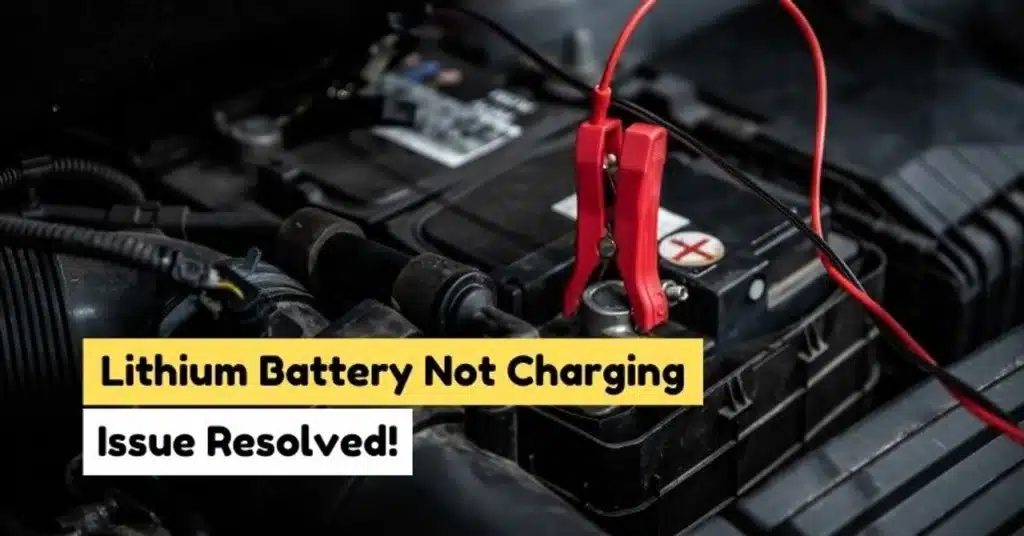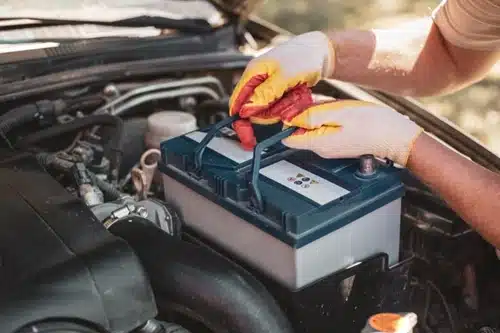You may have found that your phone, laptop, and power tools suddenly stopped charging and stopped working. Don’t worry, this guide will provide you with a clear, step-by-step method to help you diagnose and try to fix this annoying problem yourself.
Table of Contents
ToggleLithium battery not charging Inspection and troubleshooting

When your device battery won’t charge, don’t panic, start by checking simple and common places.
Check the charger itself. Are you using the original charger? Does it match the voltage and current of your device? Sometimes a device won’t charge if you use the wrong charger. Check the charger for any obvious damage and is the charger indicator light on? It’s best to try a new charger to rule out the charger as the problem.
Check the charging cable and connector. Check if the charging cable is obviously worn or broken, and if the wire is broken inside. Some charging ports are clogged with small fluff or other things, which can be cleaned gently with a dry soft brush. You can unplug it and plug it in again to try again.
Check whether the power strip or wall socket is normal. You can plug in a desk lamp or other small appliance to see if there is power in the socket.
If your device is a smart device such as a mobile phone or laptop, try restarting the device. Sometimes there are some temporary software glitches, and restarting can restore charging.
Has the device been dropped or soaked in water? Is the charging port noticeably loose or damaged?
In-depth battery diagnostics

If the initial checks above don’t solve the problem, you’ll need to dig deeper to see if there’s something wrong with the battery itself.
Battery temperature issue. If you think the battery may be too hot or too cold, bring the device and battery to room temperature for about half an hour to an hour to allow it to return to normal temperature before trying to charge it again.
Is the lithium battery over-discharged? If the lithium battery is completely exhausted and has not been used for a long time, it may enter a deep sleep state, and a normal charger may not be able to wake it up all at once. Sometimes you need to connect the original charger and continue charging to activate it.
The lithium battery may have aged. The charge and discharge cycle of a ternary battery is only about 500 times, and the charge and discharge cycle of a lithium iron phosphate battery is 2000 times. Your battery may have worked for a long time in the past, but it is not durable now. Or the device used to be charged once a day, but now it needs to be charged twice.
Check whether the battery has any physical damage. If you find that it is bulging, leaking, deformed, or smells a strange chemical odor, please stop using it immediately and do not try to charge it.
Another possibility is that the battery management system (BMS) itself is faulty. Even though the cell itself may still be good, if the protection board is broken, it may not charge.
Inspection of specific equipment
In addition to the general checks and battery diagnostics mentioned above, there are some unique little areas that may require additional checks for different types of devices.
If your device is a smartphone or tablet, sometimes a software issue can cause it to not charge. You can try restarting the device and then charging it.
If your device is a laptop, sometimes it may not charge due to a problem with the battery driver. You can try updating or reinstalling the battery driver.
If your device is a power tool or electric bicycle, check the metal contacts on the battery compartment and the device. If these contacts are dirty, oxidized or have poor contact, it may also cause charging failure or unstable power supply.
If you are using a portable energy storage power supply or a DIY battery pack, you need to check whether all the connecting wires are firmly connected and whether there are any loose or poor contacts.
Seek professional help
But sometimes, it may be beyond your ability to effectively handle. In this case, you should consider seeking professional help.
If the battery shows obvious physical damage, swelling or leakage, stop any attempt and do not charge it. It must be handled by professionals at this time. Safety comes first.
If you are unsure or unsure about a step while troubleshooting or trying to solve a problem, it would be safer to stop and leave it to a professional.
If your device is still under warranty, it is best to contact the official after-sales service directly and let them judge and handle it.
Tips for preventing lithium batteries from failing to charge
If you have good charging habits, many charging problems can be prevented in advance.
Try to use the original charger and charging cable of the device, or choose a well-known brand charger and cable with guaranteed quality. Poor quality chargers and cables may have unstable voltage and current, which can easily damage the battery.
Today’s lithium batteries don’t like to be completely used up before being recharged. The ideal charging and discharging range is between 20% and 80% of power.
Avoid charging the battery or using the device in extreme temperatures, except for high-temperature batteries. Too hot or too cold will affect the chemical activity of the battery, which may not only prevent charging, but also shorten the battery life.
If your device or spare battery is not going to be used for a long time, it is ideal to charge it to about 50% and keep it in a cool, dry place.
Regularly check the appearance of the battery and charging equipment so that problems can be discovered early and dealt with early, thus preventing small problems from becoming big problems.
Handle your device and battery with care and avoid dropping, bumping or squeezing it. Physical damage to the battery can easily cause problems and even pose a safety hazard.
Conclusion
When a lithium battery won’t charge, start with the most basic chargers and cables, then the battery itself (such as cleaning the contacts and checking the appearance), and then try some specific solutions based on your device type. If the problem persists after trying the methods we discussed, it is the wisest and safest choice to seek professional after-sales or repair help in a timely manner.
